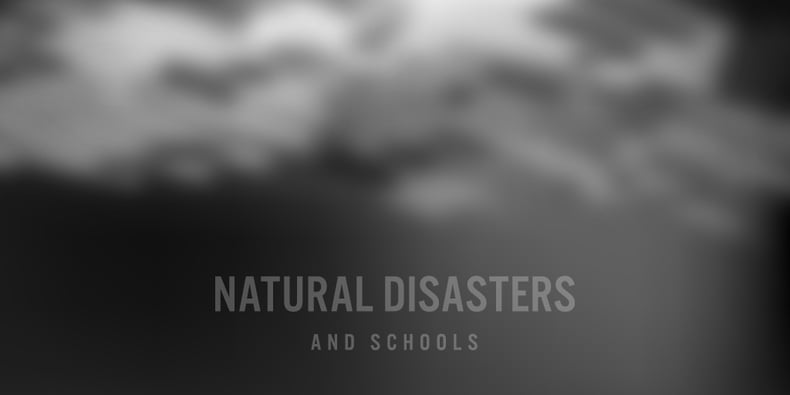
It’s been a year unlike any other in recent memory when it comes to the impact natural disasters have had on education. We’ve had Hurricanes Harvey, Irma, Maria, and Nate. Then there were the California wildfires in Sonoma and Napa Valley. And let’s not forget the big winter storm in January, along with the tornadoes that struck in April and May. Each disaster ravaged different parts of the country, causing untold damage and widespread school closures.
The effects of the various storms and wildfires are powerful reminders that no matter the disaster, the need for relief is same for the most vulnerable victims of natural disasters—the students.
Making Reopening School a Priority
Schools give children more than an academic education; they provide consistent routine, social support, life skills, and sometimes even meals. Any disruption in those connections can be deeply distressing for students, as well as for you and your colleagues. Reopening schools, when safe, should be one of the primary priorities of disaster relief efforts. Unfortunately, there are instances when educational facilities are destroyed, and recovery can often be slow.
Disaster preparedness goes a long way in reducing the impact of a natural disaster on education. This might be a great time to familiarize yourself with your school and district’s plans—but don’t forget to have a plan for your home and family, too.
Planning Ahead for Disasters
The ongoing risk of natural disasters—along with a seemingly growing occurrence of man-made disasters—have underscored the need for schools to have disaster plans that are uniquely designed for the school culture and interface with the larger community.
Awareness of the school district’s disaster plan will optimize a community’s capacity to maintain the safety of its school-aged population in the event of a school-based or greater community crisis. It’s important to note that there is a fundamental link between day-to-day emergency readiness and disaster preparedness. Schools that are well prepared for an individual emergency involving a student or staff member are more likely to be prepared for complex events such as community disasters.
The Red Cross can help you prepare for disasters and emergencies in order to minimize the risks to your school and community. Disasters and emergencies can strike anywhere and at any time. That’s why the Red Cross encourages all households to become “Red Cross Ready” to weather a crisis. If your faculty and staff are Red Cross Ready at home, any emergencies they face may have less of a disruptive effect at work. And the knowledge and skills they develop can be brought into the classroom to help students and families become better prepared, too.
The American Red Cross works closely with schools and youth-serving organizations to raise awareness of disaster risk and build resiliency among young people. Their age-appropriate preparedness materials include engaging activities and easy action steps that your students will find both fun and effective.
Preparedness Is Key
Clear guidelines are only part of the process. Schools must also have the resources and expertise to implement disaster plans. Here are some resources to consider when Mother Nature strikes:
- Pediatricians can play important roles in the development and execution of these plans as both medical home providers and school physicians. Check out the American Academy of Pediatrics for more information.
- Additional information can be found online within the U.S. Department of Education’s resource, “Practical Information on Crisis Planning: A Guide for Schools and Communities.”
- The Centers for Disease Control and Prevention have an extensive list of resources, which can be found in the Caring for Children in a Disaster section under the Teachers and Childcare tab of its website.
- And finally, the Community for Accredited Online Schools has a great guide that covers different ways everyone in the school community can prepare for various natural disasters and other emergencies to stay safe.
It goes without saying that natural disasters and other emergencies can happen at any time—and when they happen at school, everyone should be prepared to handle them safely and effectively. Administrators, teachers, staff, parents, and students can work together to promote and maintain school-wide safety and minimize the effects of emergencies and other dangerous situations.
Do you have any ideas or resources that you have used to help handle natural disasters in your school or community? Be sure to share them with us in the comments below. And to stay up to date with the latest information in education and technology, subscribe to our Mimio Educator blog today!



